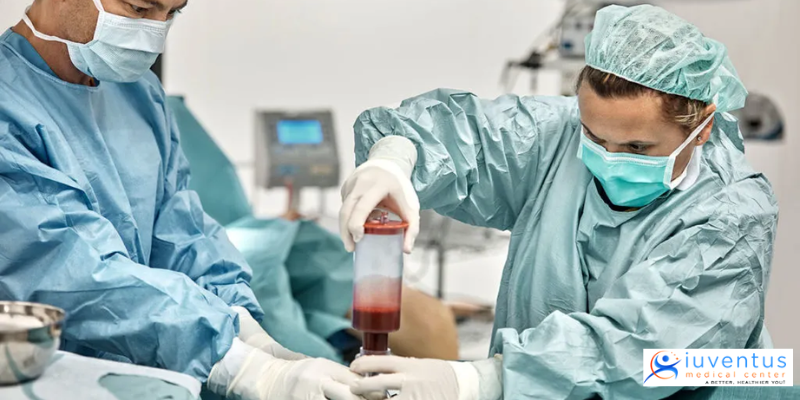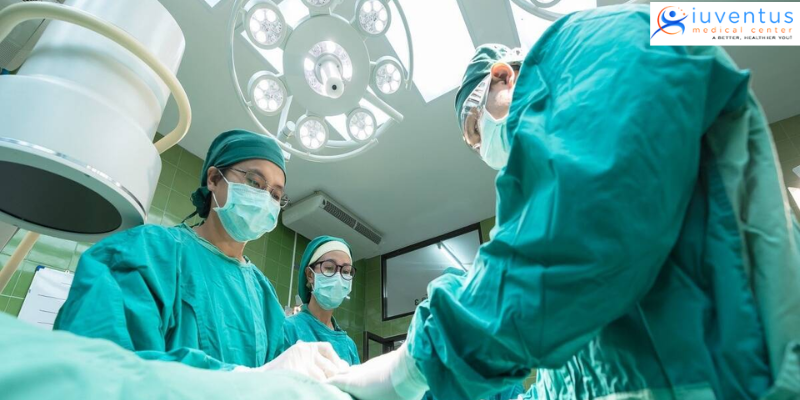A Comprehensive Guide to Stem Cell Therapy

Stem cell therapy, commonly referred to as regenerative medicine, is rapidly gaining popularity in modern society. By using stem cell implantation, this clinical treatment encourages the reparative response of injured and aberrant tissue. As a result, the therapy presents fresh approaches to treating various illnesses and injuries.
A lot has been written and reported regarding stem cell therapy. The focus of contentious talks is always the course of treatment. However, you shouldn’t let the discussions about stem cell therapies worry you. It would be preferable to comprehend how stem cells rebuild bodily tissue and can continually divide. Everything you need to know about this therapy, including its definition, traits, cell sources, and more, is provided here.
WHAT IS STEM CELL THERAPY?

Stem cell therapy, or regenerative medicine, uses specialized single cells. They are components that occur naturally in the body and can renew themselves. Stem cells can grow into any body part, organ, or constituent.
The stem cells are usually the first cells to form in the embryo when a baby begins to develop in its mother’s womb. They undergo cell division by multiplying to create other cell types. They form every component that makes up the human body.
All cell types, such as skin, muscle, and nerve cells, are unique cells created from stem cells. When the stem cells regenerate or form a shape in the unique cells, they can no longer take on a new form. Therefore, they are left in the newly created form.
Furthermore, because the regenerated cells become insignificant after a period of human birth, preserving pure stem cells during birth can pose several benefits that experts can use in some stem cell therapies where regeneration is needed from the beginning.
WHAT TYPES OF CELLS ARE USED FOR STEM CELL THERAPY?

There are three basic types of stem cells, as follows:
1. UMBILICAL CORD STEM CELLS (HEMATOPOIETIC)
The umbilical cord stem cells consist of two typical stem cells. The hematopoietic stem cells are found in blood and bone marrow, and the mesenchymal stem cells are commonly found in tissues and fat.
Hematopoietic stem cells (HSCs), contained in bone marrow, can help treat conditions such as myeloma, lymphoma, and leukemia. The hematopoietic stem cells can multiply into different cell types. Also, this stem cell depends on its purest form or originating tissue. The umbilical cord stem cell connects stem cells and blood vessels, linking the baby and the mother together throughout pregnancy.
When the baby is born, the umbilical cord and the placenta are cut and discarded. Therefore, obtaining and storing the stem cells is generally straightforward. Parents interested in saving their baby’s stem cells can take them from the cords and preserve them in a stem cell bank.
2. EMBRYONIC STEM CELLS (PLURIPOTENT)
Cells are obtained if the embryo is between 3 and 5 days old. Through the embryo, organisms form into human beings by growing in their mother’s womb. Embryos used for science are called embryonic stem cells. The stem cells can be obtained through in vitro fertilization.
3. ADULT STEM CELLS (MULTIPOTENT OR UNIPOTENT)
You can get an adult stem cell from a well-developed body organ such as the brain, skin, or bones. However, the stem cells present in these organs are few. Hence, they keep producing cells of the same kind. For instance, stem cells found in the liver can only produce cells in the liver.
WHAT ROLE DOES STEM CELL THERAPY PLAY?
The need for stem cell therapy makes it one of the most important and well-liked clinical procedures. But the fact that they pose little to no danger distinguishes them from other operations. If the necessary cells are present, this operation, like other clinical surgeries, enables the body’s inherent ability to undergo cell regeneration.
Stem cells are essential, as they keep growing and are intensive research areas in medicine today. Through research, publishing more findings helps investigate and support the effectiveness of treating blood disorders and dysfunctions of the body’s immune system, which may provide tremendous benefits. Furthermore, there are no medical procedures that are risk-free.
WHAT ARE THE BENEFITS OF STEM CELLS IN TODAY’S STEM CELL RESEARCH?
- Through laboratory studies of stem cells, scientists have more capacity to learn about the body’s cells. They have new ideas about the essential properties of cells and can tell one cell from another.
- Scientists use stem cells to test newly developed or discovered drugs in the laboratory. They do so by designing a model system for each drug they research. Research programs help doctors study average human body growth and determine the reasons for congenital disabilities.
- Researchers provide appropriate guidelines that help many people understand or identify stem cells as the blueprint of the body system.They know the body better, and they can tell how it works.
- Through stem cell research, patients with different diseases, especially chronic heart conditions, can now have a glimmer of hope. Due to research, many kinds of stem cell medical solutions are working and can fully treat many types of heart diseases.
- Recently, stem cell therapy has kept increasing in demand as it can function in many different ways than standard medical science.
- Researchers can grow healthy heart muscle cells in the lab, all thanks to insight from stem cells. The heart muscles are used in transplanting damaged hearts. So, stem cell therapy can help a patient get a brand new heart through the astonishing efforts of the scientific team.
CONCLUSION
Stem cells have helped in so many ways to improve health. Bone marrow can help treat leukemia or lung diseases. People with hair loss problems, eyesight conditions, blood diseases, orthopedic issues, and brain and spinal cord issues can even treat such conditions through this astonishing research.
Stem cells might be the future of medicine, as they have quickly become a tried and true clinical procedure. The treatment has a unique capacity to fight multiple severe diseases and illnesses that make life unbearable. If you are seeking stem cell therapy, it is safe and efficient.
